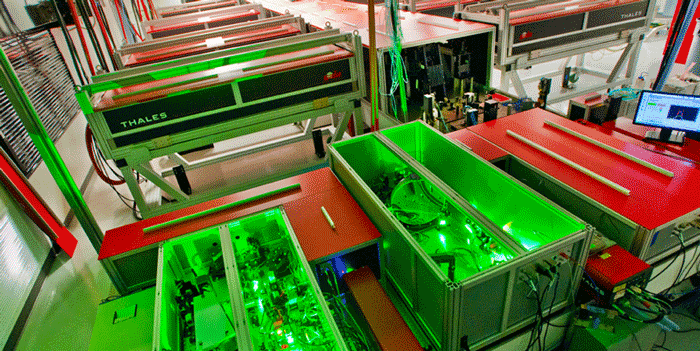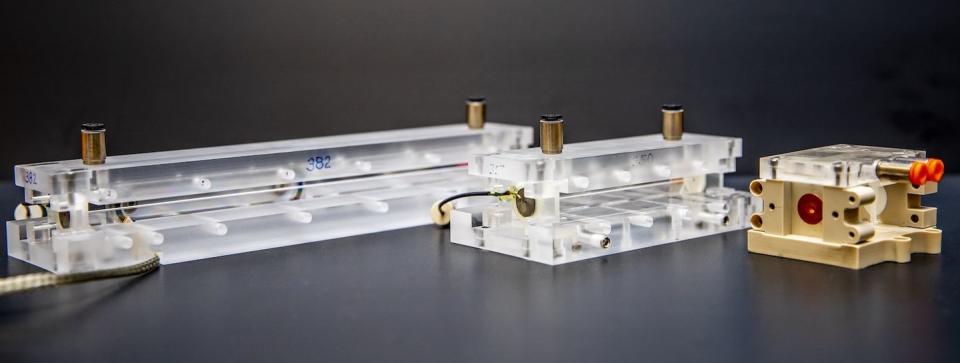Scientists Are Trying To Shrink Particle Accelerators

Particle accelerators play a fundamental role in everything from nuclear physics to modern medicine. A team in California is working on a way to shrink the massive devices.
Particle accelerators rely on electromagnets to create electric fields. The team has built a model using the far smaller plasma waves.
Their recent test was a success, but the next step is to try and generate even more power.
Particle accelerators are crucial to understanding modern science. From the Large Hadron Collider (LHC) near Geneva, Switzerland to the Spallation Neutron Source at the Oak Ridge National Laboratory in Tennessee, accelerators are crucial, Department of Energy says, in fields as varied as physics and chemistry, biology and medicine, Earth sciences and building stronger materials.
A team at Berkeley Lab's BELLA Center just doubled the previous world record for energy produced by laser plasma accelerator, a development which could make for smaller and cheaper accelerators everywhere.
Particle accelerators are often extremely large. The LHC, which has its size in the name, is 16.7 miles (27 km) in circumference. There's a lot to fit in: accelerators must have a beam pipe in which particles are guided by powerful electromagnets, electric fields which can switch from positive to negative on command, a fixed target for the particles to reach like a thin piece of metal foil, and finally detectors which can study the countless collisions the induced by the accelerator.
The team at the BELLA Center thinks that a plasma wave could provide acceleration through an accelerator through its electric field. A plasma wave, which is a wave of charged particles, could be created through timed laser pulses that would eventually built up to an electric field thousands of times stronger than those achieved in standard accelerators.
Using plasma waves, the BELLA team was able to generate electron beams with energies up to 7.8 billion electron volts (GeV) in an 8-inch-long plasma. This would require approximately 300 feet of conventional technology.
The problem with this type of particle acceleration in the past has been the natural tendency of plasma waves to spread out. The BELLA team instituted a new plasma waveguide to keep things focused, with an electrical discharge being triggered within a sapphire tube. The sapphire tube is filled with gas, and when hit with the electrical discharge turns into the fourth common state of matter—plasma.

Once the tube contains plasma, a laser pulse known as a "heater" drills out some of it from the tube's middle. This drilling makes the tube less dense, allowing to focus better. The next step for the team is to think even bigger.
"The heater beam allowed us to control the propagation of the driver laser pulse," says Anthony Gonsalves in a press statement. "The next experiments will aim to gain precision control over electron injection into the plasma wave for achieving unprecedented beam quality, and to couple multiple stages together to demonstrate the path to even higher energy."
You Might Also Like

